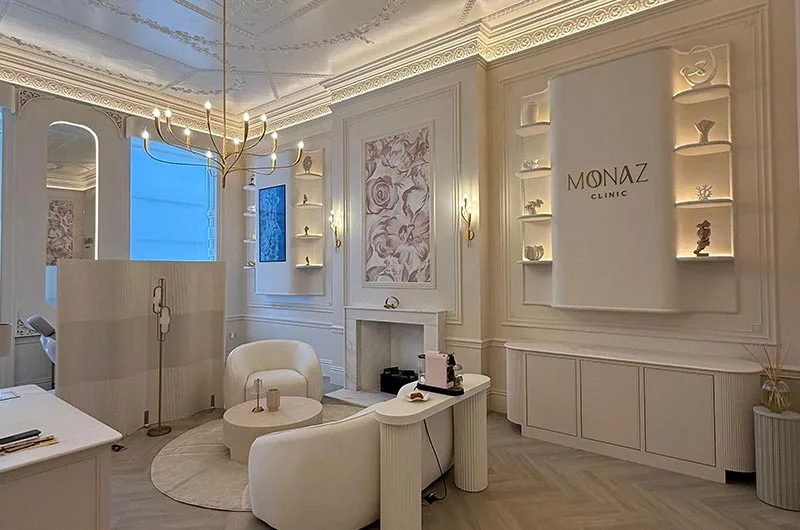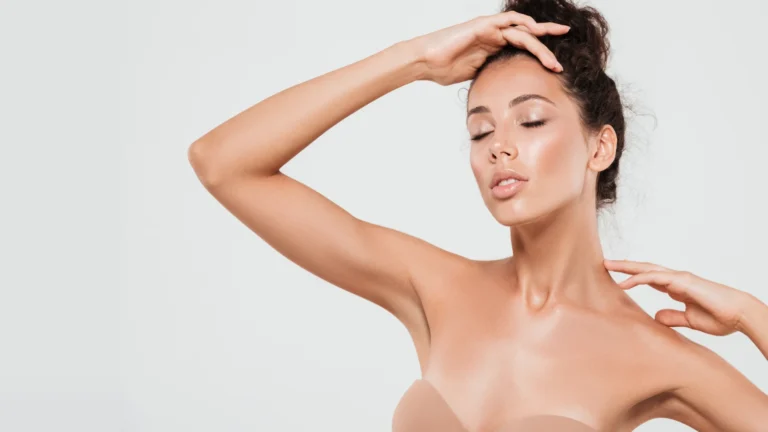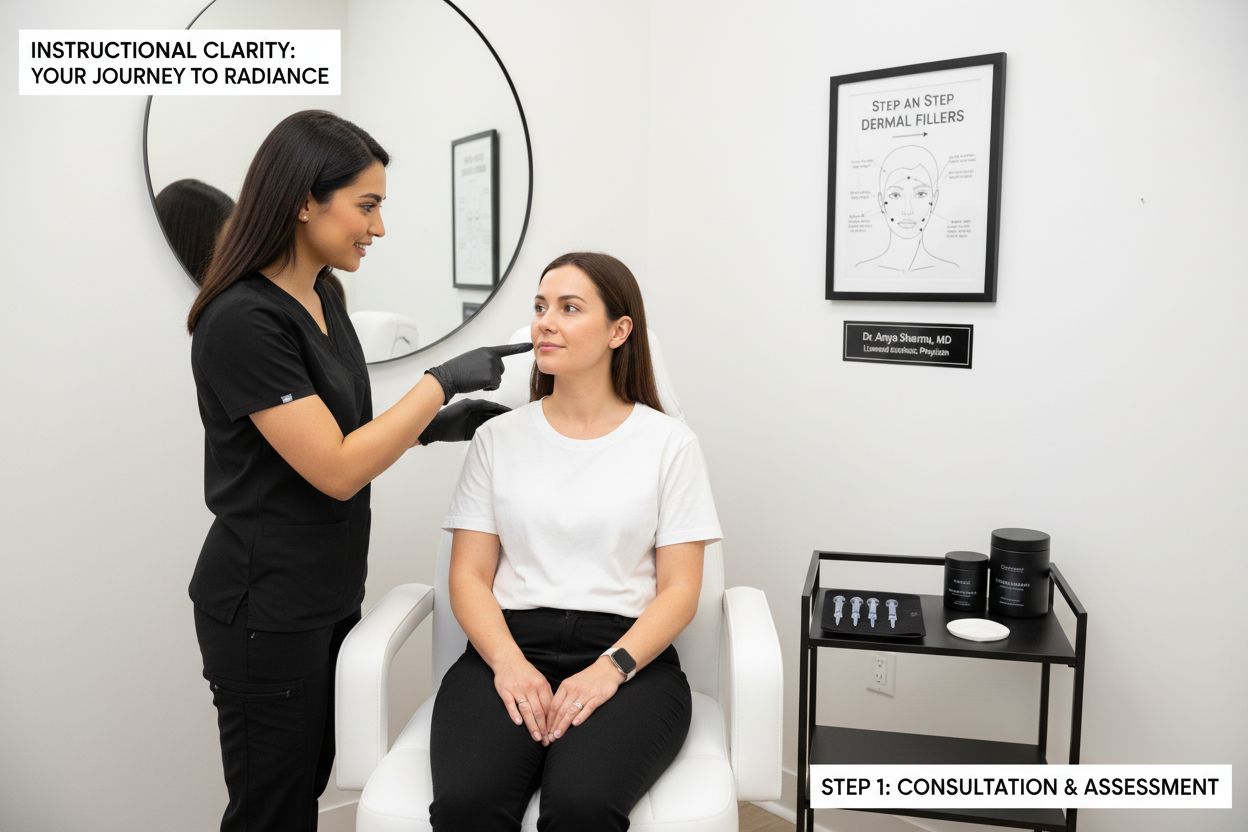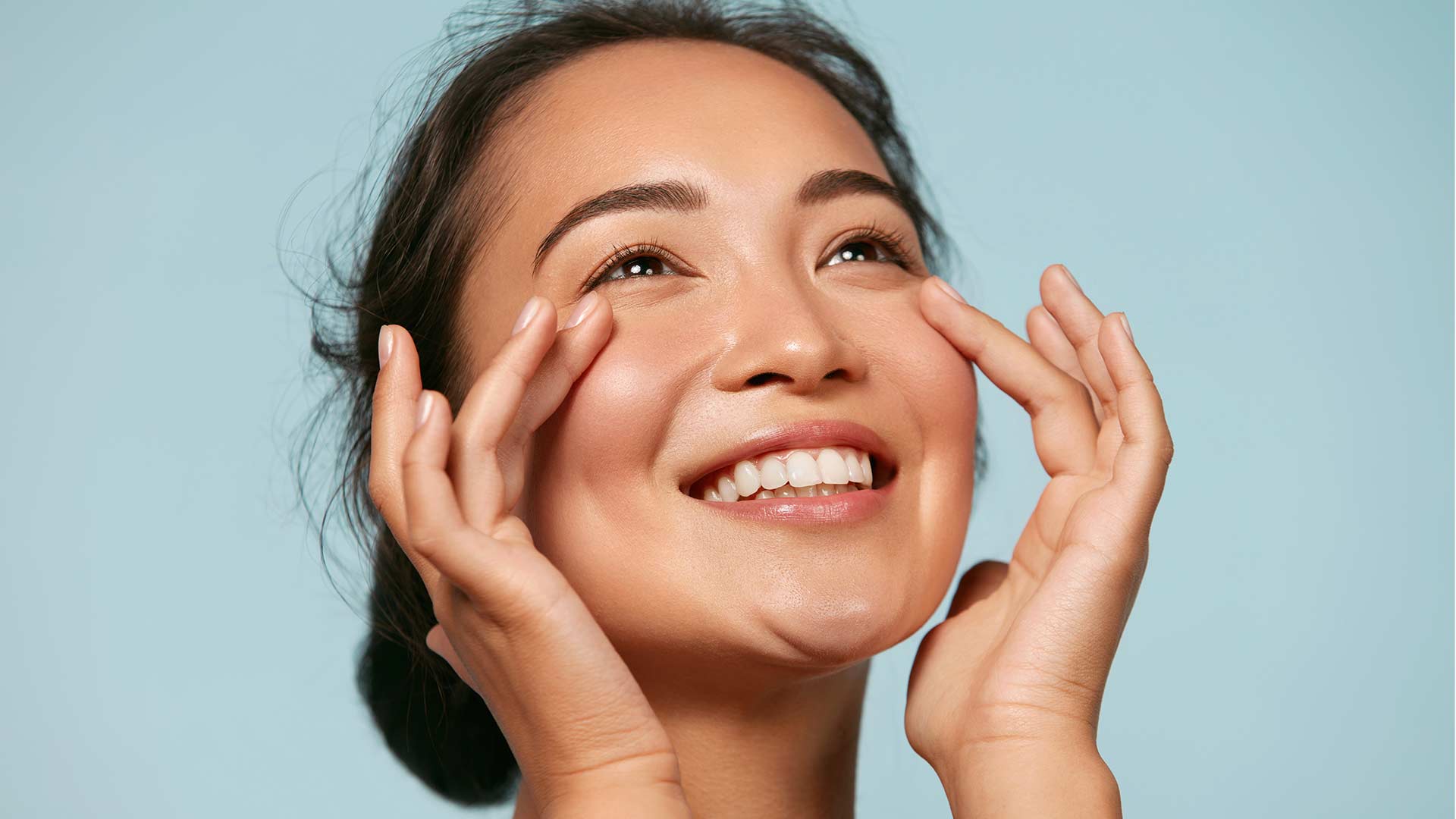Discover the step by step dermal fillers process to transform your facial aesthetics in London, guiding you to a flawless look.
Choosing who injects your dermal fillers shapes everything about your results and safety. Over 80 percent of serious filler complications come from unqualified providers, a fact many overlook. Plenty of clinics claim skill, but only practitioners with proper medical training can truly deliver seamless and natural changes. That small decision makes all the difference.
Table of Contents
- Engage A Qualified Practitioner
- Discuss Your Desired Outcomes
- Select Appropriate Dermal Fillers
- Prepare Your Skin For Treatment
- Receive Dermal Filler Injections
- Monitor And Assess Results
Quick Summary
| Key Point | Explanation |
|---|---|
| 1. Choose a qualified practitioner | Verify medical credentials and experience to ensure safety and aesthetic success with dermal fillers. |
| 2. Communicate your desired outcomes | Clearly articulate your aesthetic goals to align expectations with your practitioner’s expertise and treatment plan. |
| 3. Select the right dermal fillers | Understanding the specific type of filler and its application ensures a tailored approach for optimal results. |
| 4. Prepare your skin adequately | Support skin health before treatment to enhance filler effectiveness and reduce complications post-procedure. |
| 5. Monitor your results post-treatment | Follow up on aesthetic changes and maintain communication with your practitioner for ongoing satisfaction and assessment. |
Engage a Qualified Practitioner
Choosing the right practitioner is the foundation of a successful dermal filler experience. Your safety and aesthetic results depend entirely on selecting a medically qualified professional who understands facial anatomy and aesthetic nuance. At Monaz Clinic, our practitioners are rigorously trained and registered with professional medical bodies, ensuring you receive expert care.
Finding the right practitioner requires careful consideration. Begin by verifying their medical credentials and professional registrations. Learn more about selecting the right aesthetic clinic to guide your research. The General Medical Council (GMC) recommends checking a practitioner’s qualifications, ensuring they are registered with an official medical or aesthetic professional body. Key credentials to examine include:
- Medical degree or nursing qualification
- Specific aesthetic treatment certifications
- Current professional registration status
- Years of specialized aesthetic experience
During your initial consultation, ask direct questions about the practitioner’s experience with dermal fillers. A qualified professional will transparently discuss their background, show before and after photographs of previous treatments, and explain potential risks and expected outcomes. They should also conduct a comprehensive facial assessment, discussing your aesthetic goals and recommending personalized treatment approaches.
When meeting potential practitioners, pay attention to their communication style and professional environment. A reputable clinic will prioritize patient safety, provide clear information, and make you feel comfortable. According to the NHS guidance on cosmetic procedures, patients should feel empowered to ask questions and understand every aspect of their proposed treatment. Trust your instincts and select a practitioner who demonstrates medical expertise, listens to your concerns, and prioritizes natural, personalized results.
Below is a table summarising key practitioner credentials and factors to verify during your search, helping you confidently assess potential providers for your dermal filler treatment.
| Credential/Factor | Details/What to Check | Why It Matters |
|---|---|---|
| Medical Degree/Nursing Qualification | Confirm valid degree or qualification | Ensures provider has formal medical training |
| Aesthetic Treatment Certifications | Look for evidence of specialist courses | Demonstrates specific competency in facial aesthetics |
| Professional Registration | Must be registered with GMC or equivalent | Legal requirement providing patient protection |
| Years of Aesthetic Experience | Ask about number of years and procedures performed | Greater experience usually correlates with safer, more natural-looking results |
| Before and After Photographs | Review images of previous treatments | Visual proof of skill and consistency |
| Clinic Environment | Assess professionalism and clarity of information | Indicates high standards of patient care |
Discuss Your Desired Outcomes
Effective communication is the cornerstone of achieving your aesthetic goals with dermal fillers. This consultation step transforms your abstract vision into a tangible treatment plan, bridging the gap between your expectations and professional expertise. Your conversation with the practitioner will determine the precision and success of your aesthetic journey.
According to NHS guidance on cosmetic procedures, a comprehensive discussion about desired outcomes helps establish realistic expectations. Begin by articulating your specific aesthetic concerns with clarity and honesty. Whether you seek volume restoration, wrinkle reduction, or facial contouring, describe the changes you envision. Bring reference photographs or visual examples that illustrate your desired look, helping your practitioner understand your aesthetic goals more precisely.
During this discussion, your practitioner will conduct a thorough facial assessment. They will examine your facial structure, skin quality, and natural symmetry to determine the most appropriate dermal filler approach. Be prepared to share your complete medical history, including:
- Previous cosmetic procedures
- Current medications
- Allergies or skin sensitivities
- Any underlying health conditions
A skilled practitioner will not only listen but also provide professional insights. They might suggest modifications to your initial vision that enhance your natural features while maintaining facial harmony. Open dialogue is crucial – ask about potential treatment outcomes, recovery expectations, and any potential risks or limitations. Your practitioner should explain different filler types, their specific applications, and how they might address your unique aesthetic concerns.
Verify that you and your practitioner are aligned on the treatment plan. A successful consultation concludes with a clear, mutually understood strategy that reflects your aesthetic aspirations while ensuring natural, refined results.
Select Appropriate Dermal Fillers
Selecting the right dermal filler is a nuanced process that requires professional expertise and personalized assessment. Your unique facial structure, skin type, and aesthetic goals will guide this critical decision, transforming your treatment from a generic procedure to a tailored aesthetic solution. Learn more about understanding dermal filler benefits to appreciate the complexity of this selection process.
According to NHS guidance, dermal fillers vary significantly in composition and purpose. Hyaluronic acid fillers remain the most common, offering versatility for different facial areas. Practitioners will evaluate your skin’s specific characteristics, considering factors like volume loss, skin elasticity, and desired enhancement regions. Some fillers work best for delicate areas like under-eye hollows, while others provide robust structural support for cheek and jawline contouring.
Your practitioner will recommend fillers based on several key considerations:
- Skin thickness and texture
- Depth of wrinkles or volume loss
- Specific facial region being treated
- Desired longevity of results
- Potential allergic reactions or sensitivities
During this selection process, transparency is paramount. A skilled practitioner will explain the properties of different fillers, discussing their molecular weight, cross-linking techniques, and how these technical aspects translate into visual outcomes. They might suggest combining multiple filler types to achieve a balanced, natural-looking result. The goal is not just volume enhancement, but harmonious facial rejuvenation that respects your inherent facial architecture.
Verification of an appropriate filler selection occurs through detailed consultation, visual assessment, and collaborative decision-making. Your practitioner should provide a clear rationale for their recommendations, allowing you to understand and feel confident in the chosen approach. Trust the expertise of a medically qualified professional who prioritizes your unique aesthetic vision.
Prepare Your Skin for Treatment
Preparing your skin for dermal filler treatment is a critical step that significantly influences treatment effectiveness and recovery. Proper skin preparation creates an optimal canvas for aesthetic enhancement, ensuring maximum filler performance and minimizing potential complications. Explore our guide to building a personalized skincare routine to understand comprehensive skin health strategies.
In the weeks leading up to your treatment, focus on nurturing your skin’s health and resilience. Hydration becomes paramount – increase your water intake and use gentle, non-irritating moisturizers that support skin barrier function. Avoid harsh exfoliants or aggressive skincare treatments that might compromise your skin’s integrity. If you use retinol or similar active ingredients, discuss tapering or pausing these treatments with your practitioner.
Prepare your skin by addressing potential risk factors and optimizing your overall health:
- Stop blood-thinning medications and supplements (with medical guidance)
- Avoid alcohol for at least 24 hours before treatment
- Minimize caffeine intake to reduce potential swelling
- Ensure adequate sleep and stress management
Important considerations extend beyond topical preparation. Your general health significantly impacts treatment outcomes. A balanced diet rich in vitamins, particularly vitamin C and zinc, supports skin healing and collagen production. Reduce salt intake to minimize fluid retention, and consider supplements that promote skin elasticity and recovery under professional guidance.
On the day of treatment, arrive with clean, makeup-free skin. A fresh face allows your practitioner to assess your skin’s condition accurately and ensures a sterile treatment environment. Your preparation demonstrates commitment to achieving optimal aesthetic results, transforming the dermal filler experience from a simple procedure to a carefully orchestrated journey of skin rejuvenation.
This table organises essential skin preparation actions and considerations before your dermal filler appointment, ensuring you follow key steps for optimal treatment outcomes.
| Preparation Step | Specific Action | Purpose/Result |
|---|---|---|
| Hydration | Increase water intake and apply gentle moisturisers | Promotes healthy, resilient skin |
| Stop Blood Thinners | Cease blood-thinning medications/supplements with medical advice | Reduces risk of bruising |
| Avoid Alcohol | Refrain from drinking for at least 24 hours before | Minimises swelling and complications |
| Limit Caffeine | Reduce consumption prior to procedure | Helps decrease potential swelling |
| Proper Skincare Regimen | Pause harsh exfoliants/retinol if recommended | Prevents skin irritation |
| Eat Nutritious Diet | Focus on vitamin-rich meals, especially vitamin C and zinc | Supports healing and collagen |
| Arrive With Clean Skin | Remove all makeup before appointment | Ensures accurate assessment and sterile procedure |
Receive Dermal Filler Injections
The moment of receiving dermal filler injections marks the transformative intersection of aesthetic vision and professional expertise. This precise procedure requires a delicate balance of technical skill and artistic understanding, converting your carefully discussed treatment plan into tangible facial refinement. Discover essential tips for a natural-looking filler workflow to appreciate the nuanced approach required.
As you recline in the treatment chair, your practitioner will meticulously map the injection sites, using professional techniques to ensure symmetry and optimal product placement. Expect a series of small, strategic injections that build volume and contour gradually. The procedure typically involves using fine needles or cannulas, with the practitioner selecting the most appropriate technique based on your specific facial anatomy and treatment goals.
During the injection process, you might experience mild sensations:
- Slight pinching or pressure at injection sites
- Temporary mild discomfort
- Potential brief stinging or tingling sensation
- Momentary awareness of product placement
Your practitioner will likely work systematically, potentially using a combination of techniques to achieve the most natural and harmonious result. They might pause periodically to assess symmetry, ensuring each injection contributes to your overall aesthetic vision. Communication remains crucial – do not hesitate to provide feedback or express any concerns during the procedure. A skilled practitioner will create an environment of comfort and collaborative treatment.
Verification of successful treatment occurs through immediate visual assessment and precise measurement. Your practitioner will likely use professional techniques to confirm product placement, symmetry, and desired volume enhancement. The procedure concludes with gentle massage to integrate the filler and ensure smooth, natural-looking results. Trust in the expertise of your chosen medical professional transforms this moment from a mere cosmetic intervention into a personalised aesthetic journey.
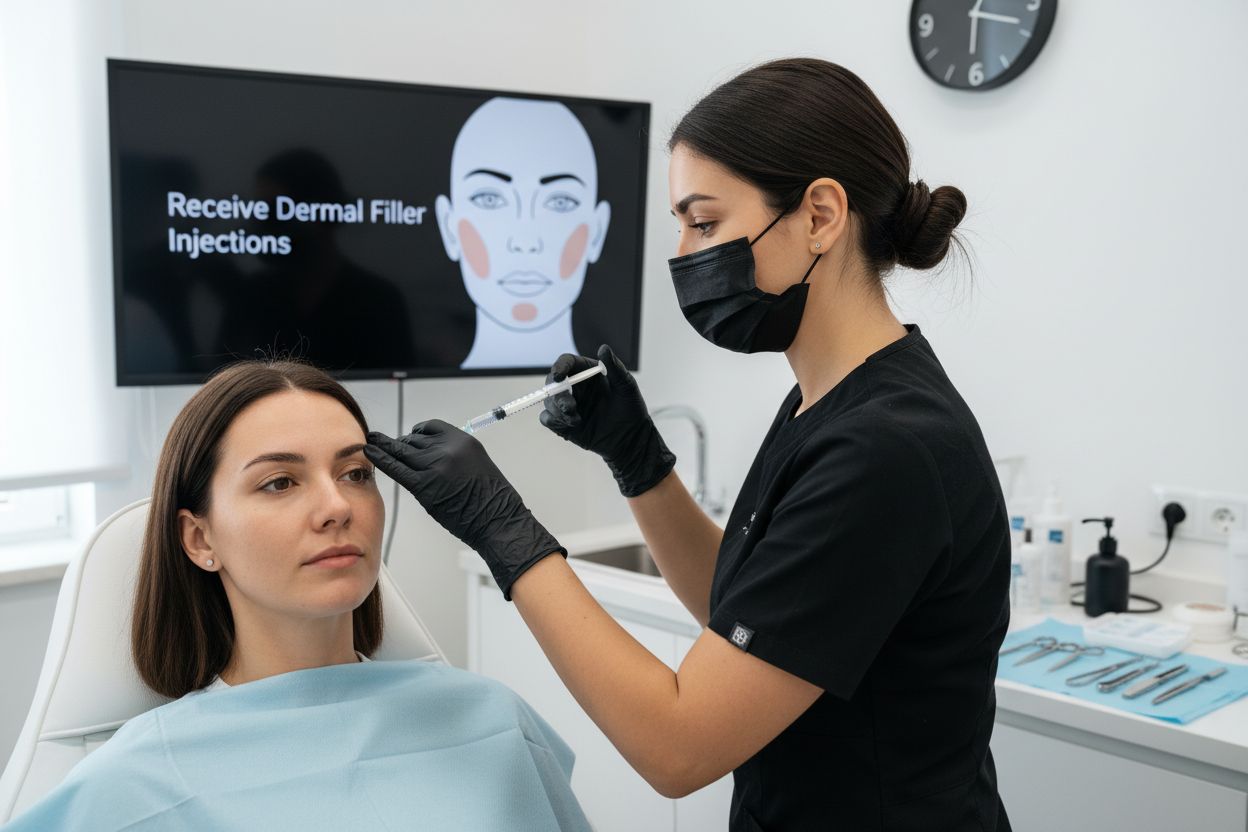
Monitor and Assess Results
Monitoring and assessing dermal filler results is a crucial phase that transforms your treatment from a singular event into a comprehensive aesthetic journey. Your initial results are not the final destination, but the beginning of a nuanced transformation that requires careful observation and professional guidance. Explore our essential steps for dermal filler aftercare to understand the comprehensive approach needed.
In the days and weeks following your treatment, your skin will undergo subtle changes as the dermal filler settles and integrates with your natural facial structure. Expect a gradual refinement of your results, with initial swelling and potential minor asymmetries resolving naturally. Documenting your healing process through photographs taken under consistent lighting can provide objective evidence of your aesthetic progression.
Key aspects to monitor during your recovery include:
- Symmetry of filler placement
- Reduction of initial swelling
- Smoothness of product integration
- Absence of unusual discomfort or inflammation
- Maintenance of natural facial movement
Professional follow-up becomes integral to achieving optimal results. Schedule a review appointment with your practitioner approximately two weeks after treatment, allowing sufficient time for initial healing and product settlement. During this consultation, your practitioner will conduct a comprehensive assessment, examining the filler’s integration, discussing your satisfaction, and addressing any subtle adjustments that might enhance your aesthetic outcome.
Successful result monitoring extends beyond visual assessment. Pay attention to how the treatment affects your overall facial dynamics and emotional confidence. The true measure of a successful dermal filler procedure lies not just in physical transformation, but in the renewed sense of self-assurance and comfort you experience.
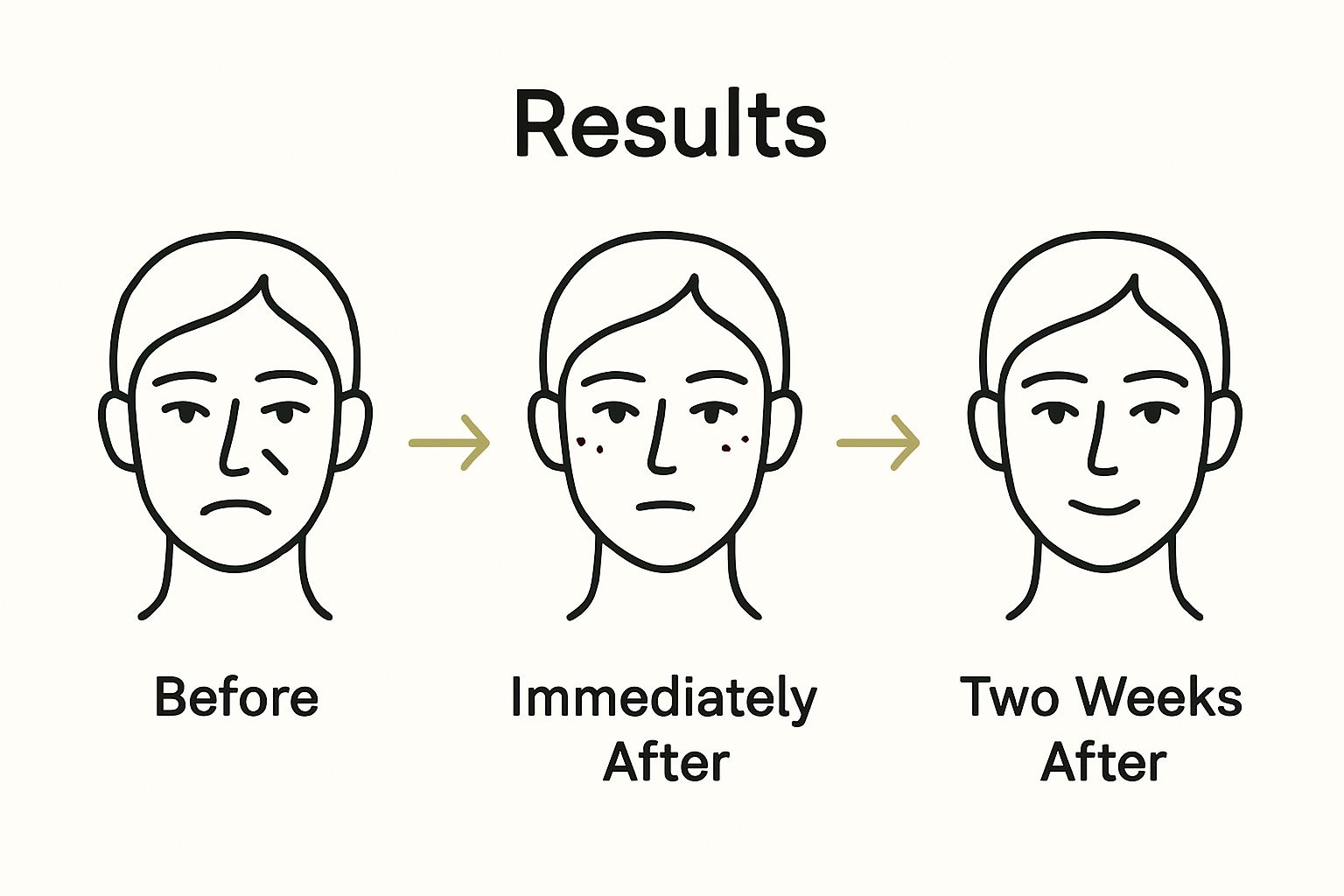 Trust in the expertise of your medical professional and remain patient as your refined aesthetic gradually emerges.
Trust in the expertise of your medical professional and remain patient as your refined aesthetic gradually emerges.
Ready to Take the Next Step Toward Aesthetic Perfection?
Achieving flawless results with dermal fillers is about more than just the procedure. It is about finding a practitioner you trust, having an honest discussion about your goals, and feeling confident in each step of your journey. The article highlighted common concerns such as understanding practitioner qualifications, choosing the correct treatment to suit your facial features, and the importance of open communication. If you have ever felt unsure whom to trust with your facial aesthetics or have struggled to find clear guidance, you are not alone. At Monaz Clinic, we guide you through every phase of your transformation with medically grounded, personalised expertise.
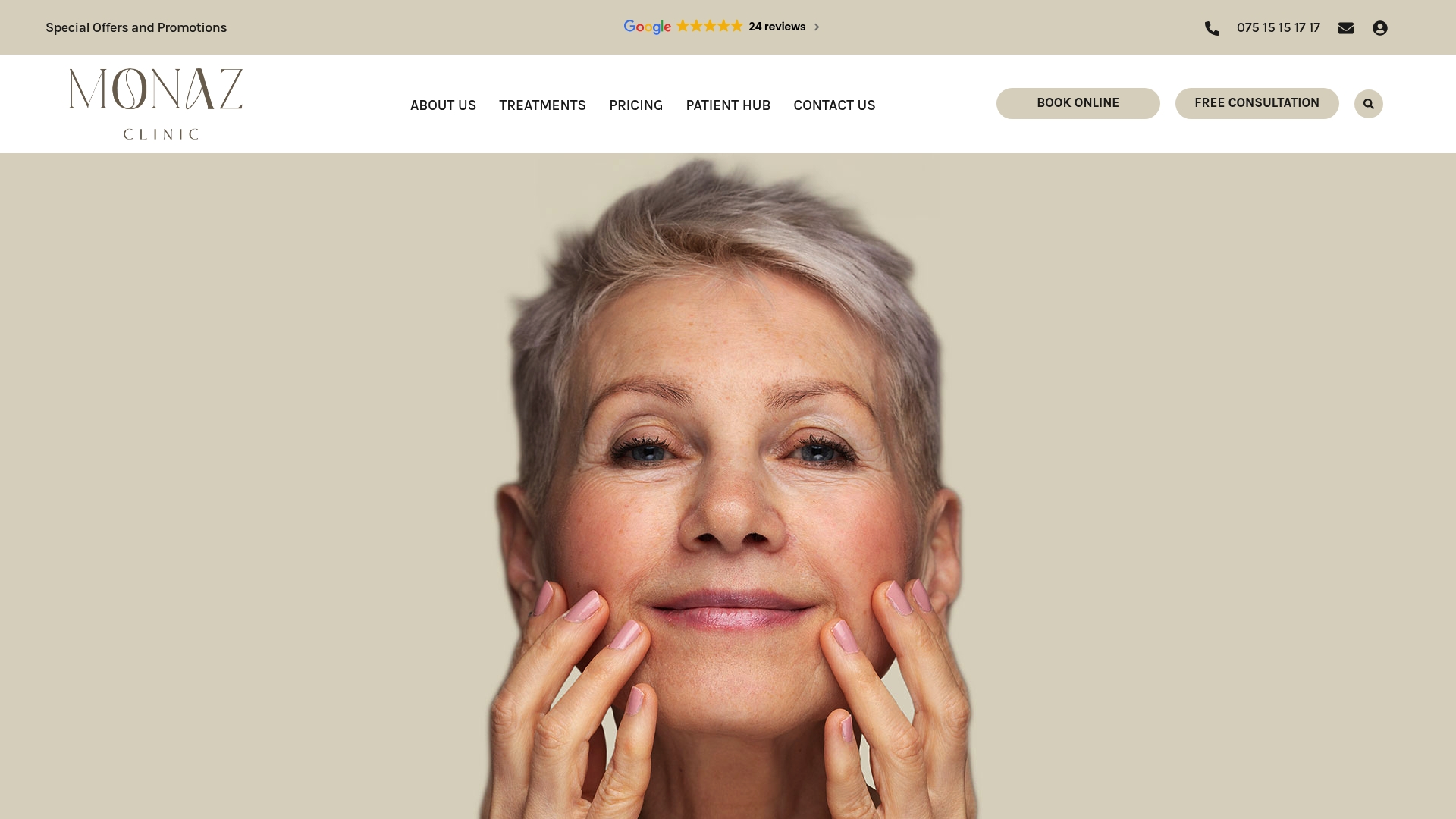
Do not settle for uncertainty or generic solutions. Visit our tips for facial aesthetics to find expert advice and discover the difference a dedicated specialist can make. Book your complimentary consultation at Monaz Clinic today and take control of your aesthetic goals. The sooner you start your step-by-step journey, the sooner you will reveal your best self.
Frequently Asked Questions
What qualifications should I look for in a practitioner for dermal fillers?
You should verify their medical degree or nursing qualification, specific aesthetic treatment certifications, current professional registration status, and years of specialized aesthetic experience.
How can I effectively communicate my desired outcomes for dermal fillers?
Articulate your aesthetic concerns clearly, bring reference photographs, and be open about what changes you envision, while also sharing your complete medical history with your practitioner.
What types of dermal fillers are available and how do I choose the right one?
There are various types of dermal fillers, with hyaluronic acid fillers being the most common. The choice depends on your facial structure, skin type, desired longevity of results, and specific areas being treated.
How should I prepare my skin before receiving dermal filler injections?
To prepare your skin, focus on hydration, stop using blood-thinning medications (with guidance), avoid alcohol and caffeine, and ensure you arrive with clean, makeup-free skin on the day of treatment.
Recommended
- 7 Essential Tips for Natural-Looking Filler Workflow – Monaz Clinic London
- Understanding the Benefits of Dermal Fillers for Facial Aesthetics – Monaz Clinic London
- 7 Essential Steps for Your Dermal Filler Checklist – Monaz Clinic London
- How to Achieve Natural Look Fillers for Beautiful Skin – Monaz Clinic London

